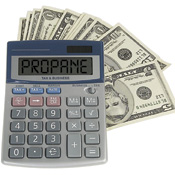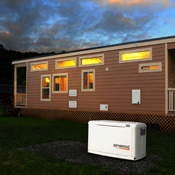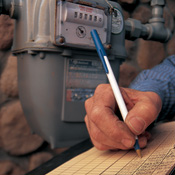For most goods, the intersection of supply and demand sets the prices at which they are sold. Of course, that’s just economic theory. In the real world, prices, especially those of commodities such as propane, are more complicated than that. Here are the top factors which influence this fossil fuel’s price.
Supply – Supply has to do with how much propane is available for use. A few elements affect supply.
- Availability and Price of Crude Oil: Approximately 55% of the propane in the US is extracted from raw natural gas and the remaining 45% is extracted from petroleum. Since propane is a by-product of these other commodities, its availability will be influenced by the state of these fuels. Historically, propane prices have correlated more closely with those of crude oil.
- Production Volume: The amount of production and current inventory levels possibly have the greatest effect on propane prices. Inventories are typically tracked by region, which includes New England, Mid-Atlantic, Midwest and Gulf Coast. Approximately 90% of the propane used in the US comes from the US with the rest being fulfilled by imports.
- Logistics: Trucks, railroads, tankers, and pipelines can be used to transport propane from distribution terminals to consumers. The main bulk distribution points are along the Gulf Coast and in the Midwest states. If consumers live further away from these distribution centers, then they will likely pay higher prices which factor in additional transportation costs.
Demand – Demand covers the uses of propane. The chemical and industrial industry typically consumes the most propane every year followed by residential, commercial and transportation. Weather and consumer need are closely linked in influencing demand.
- Consumer Need: Several consumers need propane for their day-to-day activities. These are businesses that use heavy machinery, such as forklifts and industrial-grade appliances. Farms, restaurants, office buildings, taxi cab fleets and more rely on propane every day. Their use is relatively easy to predict. The other main use of propane – heating homes – depends heavily on how cold the winter season gets. Consumer need is not just domestic however, as the US does export a portion of their propane production. Families also use propane for fueling backyard grills, but this doesn’t have much of an impact on prices.
- Weather: While propane producers know that inventories need to be built-up in advance of the winter heating season, abnormal weather conditions and natural disasters can result in large spikes in demand. If there isn’t enough inventory to meet this demand, prices will rise sharply as well. If shortages are so dire that consumers have to wait for imports to come in, this could drive prices up even higher. The National Oceanic and Atmospheric Administration (NOAA) is a good source for projected temperatures for various regions of the US.
Current and Future Prices
These factors affect the daily spot price of propane. Observing trends and forecasts for each of these factors can also help predict future propane prices. The US Energy Information Agency (EIA) and several market participants, for example, follow these factors closely to try and forecast propane price trends.
General research:
http://lsa.colorado.edu/essence/texts/propane.html
http://www.need.org/files/curriculum/infobook/propanei.pdf
https://www.eia.gov/special/heatingfuels/resources/Propane_Briefing.pdf





